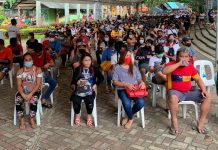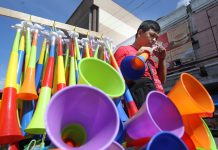
An official of the Wonjin Institute for Occupational and Environmental Health (WIOEH)-South Korea revealed on Monday its study detecting high levels of notorious pesticide in the urine samples gathered from the communities near a pineapple plantation in Baguio District, Davao City.
This is in line with the study conducted by the Interfacing Development Interventions for Sustainability (IDIS), Inc. last year with methodology includes collecting samples of urine and household dust from the communities in Baguio District, particularly in Barangay Tawan-Tawan near a pineapple plantation.
Dr. Won Kim, director for research of WIOEH-South Korea, said that a high level of chlorpyrifos pesticide was detected in the urine collected and the chemical can affect severely the children’s health.
“It could be collected by drift or the wind from the field where the pesticide was sprayed. We collected human urine. Maybe the farmer is directly exposed while the children and spouses are not involved in the spray but at the level of the pesticides in their urine samples we confirmed it. We have to find the source maybe their environment, second is maybe the food they consumed was contaminated with pesticide,” he said during Kapehan sa Dabaw at SM City Davao on Monday.
Lemuel Manalo, program coordinator of IDIS, said they conducted demographic profiling, interview, and log sheets with the farmers, and basically, skin diseases and irritation are the common cases and complaints that they profiled.
“The samples we gathered particularly from Baguio District in Barangay Tawan-Tawan have puroks amd settlements nearby and directly adjacent to plantations, The plantations subject for this study are pineapple plantations. For this research alone yung subject for the pesticides are coming from the pineapple plantations,” he said.
Meanwhile, the groups emphasized that the fight against aerial spraying continues.
This year, the city is commemorating the Ban Aerial Spray Ordinance that was passed 16 years ago and proposed by the late Councilor Leo Avila, who was then the chair of the environment committee of the City Council.
“Dabawenyos and farmer partners padayon gihapon in fighting for their rights, specially on their fight against aerial spray ordinance to keep ang mga measures in terms of agricultural management and to keep in place and reduce pesticide use. Our farmers na nakapuyo sa rural districts are affected by nearby agricultural plantations that still pose risks and hazards coming from chemicals and toxins being released by these agricultural plantations specifically mono-crop plantations in Baguio District, particularly in the Panigan-Tamugan Watershed area,” Manalo said.






